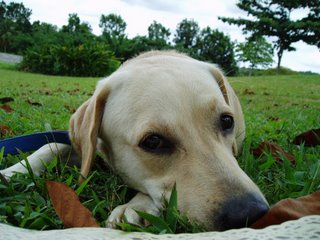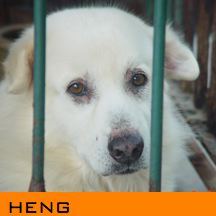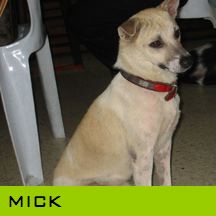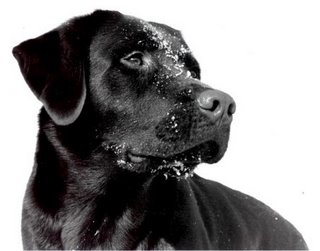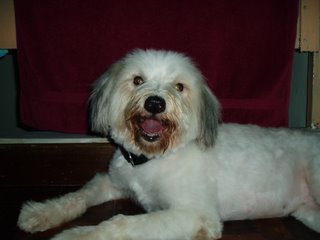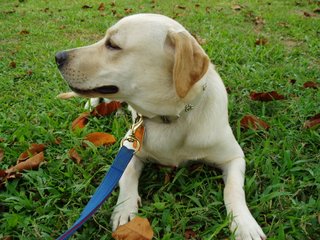
Over the past few days, my labrador retriever, Celopatra, has been rather moody, inactive and not terribly keen on her food. I have been rather concerned and have therefore been pampering her a bit more than usual, and giving additional vitamins.
And then it struck me... I think she is affected by the haze. I believe we're all affected by the damned haze, cause I know I have been having breathing difficulty. This revelation then prompted me to think about all the poor doggies that are left outside in this nasty haze. People please bring your dogs indoors...
Think about it:
We've all been advised to stay indoors as much as possible and to wash ourselves as often as we can to ensure that the grit, grime and filth are washed away to prevent us from being ill... and while everyone scurries indoors into the comfort of air-conditioning - clean air - the poor doggies are left outside the breathe the putrid air, which will inevitably make them ill!
I can only imagine how awful it must be for all outdoor dogs at this point in time, esp since Cleo, who is indoors all the time (except when we let her out to the garden for short play periods or when she goes for her walks) is already suffering from the effects of the haze.
Also, I don't think that I would have noticed that Cleo was not feeling very well if she had been an outdoor dog...
Anyway, I'd just like to plead to everyone who keeps their dogs outdoors to please bring your dogs in, at least until this bad weather clears if not permanently.

And in the mean time here's another article that I thought would be of interest:
Extracted from www.pet-rescue.org
Why Dogs Should Be Indoor Pets: Outdoor Risks, Solving Indoor Problems
When people ask, 'why shouldn't dogs be kept outside' and 'how do I teach my dog to be an indoor dog,' share this good advice, which contains guidance from 'The Great, Awful Outdoors' by canine behavior expert and author Pat Miller
Dogs like living indoors with their family. They are by nature pack animals, so keeping dogs outside denies them a place in the family pack. According to author and trainer Pat Miller, the reasons given for keeping dogs outdoors fall into two categories:
* Inappropriate dog behavior that can be managed and/or modified (example: 'the dog's not housetrained'), and
* People's preconceived notions, which can also be modified (example: 'dogs should be outside in the fresh air').
Certainly, dogs benefit from spending some time outside. But this time should consist of play sessions in the yard and walks around the neighborhood, not solitary confinement outdoors.
Problems that result from leaving dogs outdoors:
* Dogs kept outdoors are deprived of human companionship and have more trouble bonding with human family members. They have more trouble learning to interact properly with humans. And without adequate supervision and guidance from their owners, dogs can and will develop undesirable behaviors.
* Bored dogs left in yards often bark at every sound or movement to occupy themselves ... dig holes ... fence-fight with neighboring dogs and other animals ... chew and damage fencing, siding, decks and outdoor furnishings ... dig under fencing ... and climb or jump over fences. And when the owners do visit the dog in the yard, the dog is often out of control, having been starved of human companionship.
More risks:
* Escape from the yard, which can lead to being hit by a car, lost in the woods, hurt by people. Also: they can frighten and even bite people out of confusion.
* Taunting and cruelty from youths or adults on the other side of the fence.
* Theft.
* Poisoning.
* Neighbor complaints and threats; visits from animal control officers.
* Accidental release by a passerby, meter reader or service technician. And any resulting bites.
* Frustration from wanting to visit with passing dogs and humans, which can lead to barrier aggression, which fuels aggression towards other dogs and humans.
* Illness and chronic health problems from being out in hot, cold or wet weather.
* Sunburn or heatstroke - real concern in Malaysia!.
* Flystrike on ears and other body parts, which can lead to open wounds and maggot infestation. * Electrocution when digging up or chewing on wiring outside the house.
* Development of obsessive behaviors such as tail chasing, fly snapping and self-mutilation as a result of boredom and frustration.
Creative solutions to inside-out problems, courtesy of Pat Miller:
* Good manners don't just happen. The owner needs to take responsibility for helping his dog learn good behavior and house manners. That means spending some time each day in training the dog, being sure to reward him for appropriate bathroom and other behaviors. Remember that dogs are continually looking to their people for cues, so owners must provide, look for and take opportunities to reward positive behaviors and to discourage negative ones. (Example: many owners accidentally reward dogs for jumping up by pushing the dog off. Seemingly unpleasant gestures such as pushing the dog off typically encourage repeated jumping, since the dog is just looking for attention.)
* Enroll in a good training class that focuses on praise and other means of positive reinforcement. * Provide exercise each day. A tired dog is a well-behaved dog. Throw a ball with the dog. Go for long walks. Give the dog a good exercise session before you leave for work in the morning.
* Provide the dog with lots of opportunities to display good behavior. And praise him whenever he does the right thing. Positive reinforcement leads to repetition of desired behaviors.
* Until the dog learns good house manners, confine him in a dog-safe room, puppy pen or crate inside the house when you're not there to supervise.
Baby gates as well as doors can be used to control access to various parts of your house. Be sure to leave him several safe, interactive dog toys, such as a Kong toy (Cleo has 5 different Kongs that we stuff with her fav treats) stuffed with some treats and a little peanut butter or cream cheese. Make sure the dog has access to fresh water, especially when you're gone for a long period. When first using a crate, teach the dog that good things happen in the crate, and reward him when he displays calm behavior.
* Never use the crate for punishment, since that will cause the dog to develop a negative association with the crate. You can use the crate for a time-out, but keep things cheerful -- for example, if the dog gets revved up again after an exercise session ends, you might say 'Oops! Time out' and instruct him to go to the crate in a calm, upbeat voice. Miller suggests an indoor, portable tether as a good alternative to a crate for time-outs when you are home to watch the dog. A time-out should be a short, pleasant interlude for the dog.
* If you have to be gone from the home longer than the dog can hold his or her urine, arrange with a dog walking service or neighbor to take the dog out. Some people have taught dogs (usually small breeds) to use a box containing commercial dog litter or Astroturf that can be hosed off.
* Avoid leaving food, garbage and debris in areas that your dog can access. Clear off counters and put trash and garbage cans in closets, or use cans with tight-fitting lids.
* If fleas are a problem, use a good, modern form of flea control, such as the easy-to-use topical treatments that include Frontline (Cleo uses Frontline) and K9 Advantix.
* If someone in the house has allergies to animals, the best moves are to see an allergy specialist and to follow practices for reducing the chance of allergic reactions. These include vacuuming, keeping the dog off human furniture, washing hands after touching the dog, etc. You can find free allergy tips on the web.





